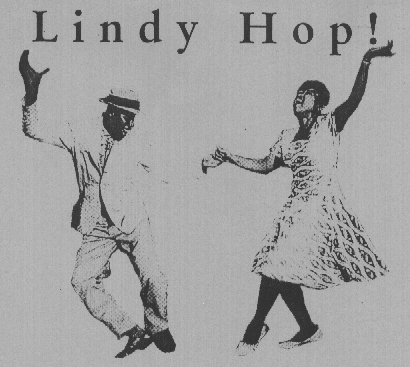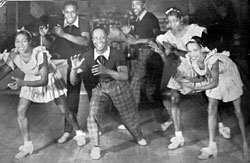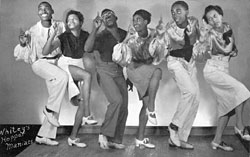 From Africa we have Samba. The unique of Samba is the rhythm, the step, and the big hat on their head. The simple bikini is also attractive. Their feet move so fast because the beat is pumped all their energy. Let’s see the beauty of Samba.
From Africa we have Samba. The unique of Samba is the rhythm, the step, and the big hat on their head. The simple bikini is also attractive. Their feet move so fast because the beat is pumped all their energy. Let’s see the beauty of Samba.Samba is a lively, rhythmical dance of Brazilian origin in 2/4 time danced under the Samba music. However, there are three steps to every bar, making the Samba feel like a 3/4 timed dance. Its origins include the Maxixe.
The Samba music rhythm has been danced in Brazil since its inception in the late 19th century. There is actually a set of dances, rather than a single dance, that define the Samba dancing scene in Brazil; thus, no one dance can be claimed with certainty as the "original" Samba style.Samba, an old Brazilian style of dance with many variations, is African in origin. It has been performed as a street dance at carnival, the pre-Lenten celebration, for almost 100 years. Many versions of the Samba (from Baion to Marcha) are danced at the local carnival in Rio. The ballroom Samba or Carioca Samba is derived from the rural "Rocking Samba" and has been known for many years. (The Carioca is a small river that runs through Rio de Janiero - hence the name Carioca refers to the people of Rio.) Today Samba is still very popular in Rio. During carnival time there are "schools of Samba" involving thousands of elaborately-costumed dancers presenting a national theme based on music typical of Brazil and Rio in particular.
Before 1914 it was known under a Brazilian name "Maxixe". As early as 1923 an international meeting of professors of dancing took note of the rise of the Samba's popularity, particularly in France. A French dance book published by Paul Boucher in 1928 included Samba instructions. The dance was introduced to United States movie audiences in 1933 when Fred Astaire and Dolores Del Rio danced the Carioca in Flying Down to Rio and several years later, Carmen Miranda danced the Samba in That Night in Rio. A Samba exhibition was given at the November 1938 meeting of the New York Society of Teachers of Dancing. General interest in the Samba was stimulated at the 1939 World's Fair in New York, where Samba music was played at the Brazilian Pavilion. A few years later the Brazilian composer Ary Barroso wrote the classic Samba, "Brasil," which quickly became a hit, and in 1944 he went to Hollywood to write the score for the musical Brazil.
 Samba has a very specific rhythm, highlighted to its best by characteristic Brazilian musical instruments: originally called tamborim, chocalho, reco-reco and cabaca. Much of Samba music came from daily life in Rio, the first famous example being "Pelo Telefone" composed by Donga. To achieve the true character of the Samba a dancer must give it a happy, flirtatious and exuberant interpretation. Many figures, used in the Samba today, require a pelvic tilt (Samba tic) action. This action is difficult to accomplish, but without it the dance loses much of its effect. Principal characteristics of the Samba are the rapid steps taken on a quarter of a beat and the pronounced rocking motion and sway of the
Samba has a very specific rhythm, highlighted to its best by characteristic Brazilian musical instruments: originally called tamborim, chocalho, reco-reco and cabaca. Much of Samba music came from daily life in Rio, the first famous example being "Pelo Telefone" composed by Donga. To achieve the true character of the Samba a dancer must give it a happy, flirtatious and exuberant interpretation. Many figures, used in the Samba today, require a pelvic tilt (Samba tic) action. This action is difficult to accomplish, but without it the dance loses much of its effect. Principal characteristics of the Samba are the rapid steps taken on a quarter of a beat and the pronounced rocking motion and sway of the dancing couple.
The Samba (also known as the Brazilian Waltz) is now a moderately popular ballroom dance, limited pretty much to experienced ballroom dancers because of its speed.
 1. Samba no pé is a solo dance that is most often danced impromptu when samba music is played. The basic movement involves a straight body and a bending of one knee at a time. The feet move very slightly - only a few inches at a time. The rhythm is 2/4, with 3 steps per measure. It can be thought of as a step-ball-change.It can be described calling it and-a-one, and-a-two, then back to one. This is the type of Samba one sees in the Brazilian Carnival parades and in other Samba carnivals over the world. This is also one of the
1. Samba no pé is a solo dance that is most often danced impromptu when samba music is played. The basic movement involves a straight body and a bending of one knee at a time. The feet move very slightly - only a few inches at a time. The rhythm is 2/4, with 3 steps per measure. It can be thought of as a step-ball-change.It can be described calling it and-a-one, and-a-two, then back to one. This is the type of Samba one sees in the Brazilian Carnival parades and in other Samba carnivals over the world. This is also one of the  most popular sambas.
most popular sambas.2. Samba de Gafieira is a partner dance considerably different than the Ballroom Samba. It appeared in the 1940s and it gets its name from the gafieira - popular urban nightclubs of Rio de Janeiro at that time. From its inception to nowadays the Samba de Gafieira has incorporated many acrobatic movements and has evolved to become today's most complex dancing style of Samba in Brazil.
3. Samba Pagode is another Samba partner dance that resembles the Samba de Gafieira but has less acrobatic movements and tend to be more intimate. It became a dance style after the appearance of the Pagode and it started in the city of São Paulo.
4. Samba Pagode is another Samba partner dance that resembles the Samba de Gafieira but has less acrobatic movements and tend to be more intimate. It became a dance style after the appearance of the Pagode and it started in the city of São Paulo.
5. Samba Reggae also originated from Bahia, it's a mix of reggae beats with Samba drums. Very popular in songs by Daniela Mercury, who catapulted the rhythm to the world with songs like "Sol da Liberdade" "O Reggae E O Mar" and "Perola Negra". Samba Reggae is the second most popular samba style in Bahia, with followers all over Brazil.
6. Samba rock is a playful form of the samba, and it originates in São Paulo. It is a Latin nightclub dance. Samba rock resembles a bit of samba de gafieira, Forró, Zouk-Lambada and Salsa.
7. Sambe de roda ("Samba of roda") is a traditional Afro-Brazilian dance performed originally as informal fun after a Candomblé ceremony, using the same percussion instruments used during the religious ceremony. The typical drum is the atabaque; drummers improvise variations and elaborations on common patterns, accompanied typically by singing and clapping as well as dancing. The Samba de Roda is a celebratory event incorporating music, choreography and poetry.
After we know the type, let’s learn the step. It’s easy and burn a lot of calories.
There are several types of samba danced in Brazil. The two leading samba forms in Rio today are the street samba dance called samba no pe, which is a solo dance and samba gafieiro, which is a partner dance.
There are several types of samba danced in Brazil. The two leading samba forms in Rio today are the street samba dance called samba no pe, which is a solo dance and samba gafieiro, which is a partner dance.
The typical type of samba danced in the Rio carnival is samba no pe. But according to some samba dancers there is a slightly distinction between Samba no pe and the performance dance used during the Rio carnival. Samba no pe is also often seen as the most original samba. Even then others may argue that there is no such thing as an original samba dance.
Samba no pe is done in a 2/4 rhythm where the dancer takes three steps to every bar. This could make the samba to feel like a 3/4 timed dance. Samba no pe could be danced either alone or in a group. The dance consists of one basic step. The basic step basically requires a straight body and a bending of one knee at a time.
In samba no pe men and women are dancing samba with different steps and emphasis on different things during the dance. The male samba dancers often do a lot of acrobatic tricks with their feet. It is said that a good samba dancer speaks with his feet.
The female dance can be characterized as quick symmetrical feet movement with each foot twisting on the heel. All the time the females samba dancers put emphasis on their femininity by using their hips and shoulders very much.
The male and female dancers can dance together but they do not touch each other. Often the men dance around the women including spins, hops and jumps. The dance has a high tempo and is complicated combination of the basic steps, different variation and improvisation.
The dance is often done unaccompanied and begins straight away when the samba music appears. The tempo of the moves change with the pace of the music, some samba dances are very fast and other samba dances move at a more normal pace.
The dance consists of jumps and turns. It's important that when you jump you should not jump too high. It's not easy to pick up the samba dance the first time you try. You should not be disappointed if you don't get the hang of it the first time. It's important that you stop looking at you feet and that you keep the body straight and at the same time start to relax.
The typical type of samba danced in the Rio carnival is samba no pe. But according to some samba dancers there is a slightly distinction between Samba no pe and the performance dance used during the Rio carnival. Samba no pe is also often seen as the most original samba. Even then others may argue that there is no such thing as an original samba dance.
Samba no pe is done in a 2/4 rhythm where the dancer takes three steps to every bar. This could make the samba to feel like a 3/4 timed dance. Samba no pe could be danced either alone or in a group. The dance consists of one basic step. The basic step basically requires a straight body and a bending of one knee at a time.
In samba no pe men and women are dancing samba with different steps and emphasis on different things during the dance. The male samba dancers often do a lot of acrobatic tricks with their feet. It is said that a good samba dancer speaks with his feet.
The female dance can be characterized as quick symmetrical feet movement with each foot twisting on the heel. All the time the females samba dancers put emphasis on their femininity by using their hips and shoulders very much.
The male and female dancers can dance together but they do not touch each other. Often the men dance around the women including spins, hops and jumps. The dance has a high tempo and is complicated combination of the basic steps, different variation and improvisation.
The dance is often done unaccompanied and begins straight away when the samba music appears. The tempo of the moves change with the pace of the music, some samba dances are very fast and other samba dances move at a more normal pace.
The dance consists of jumps and turns. It's important that when you jump you should not jump too high. It's not easy to pick up the samba dance the first time you try. You should not be disappointed if you don't get the hang of it the first time. It's important that you stop looking at you feet and that you keep the body straight and at the same time start to relax.
That's all....
^^ Thank You ^^
MOVIE TIME
 Happy Valentine's Day
Happy Valentine's Day
 Let's learn to love each other with all your heart ^^
Let's learn to love each other with all your heart ^^




 Lindy Hop, also known as Jitterbug, is the authentic Afro-Euro-American Swing dance. It is an unabashedly joyful dance, with a solid, flowing style that closely reflects its music -- from the late 20's hot Jazz to the early 40's Big Bands. Just as Jazz combines European and African musical origins, Lindy Hop draws on African and European
Lindy Hop, also known as Jitterbug, is the authentic Afro-Euro-American Swing dance. It is an unabashedly joyful dance, with a solid, flowing style that closely reflects its music -- from the late 20's hot Jazz to the early 40's Big Bands. Just as Jazz combines European and African musical origins, Lindy Hop draws on African and European 


















